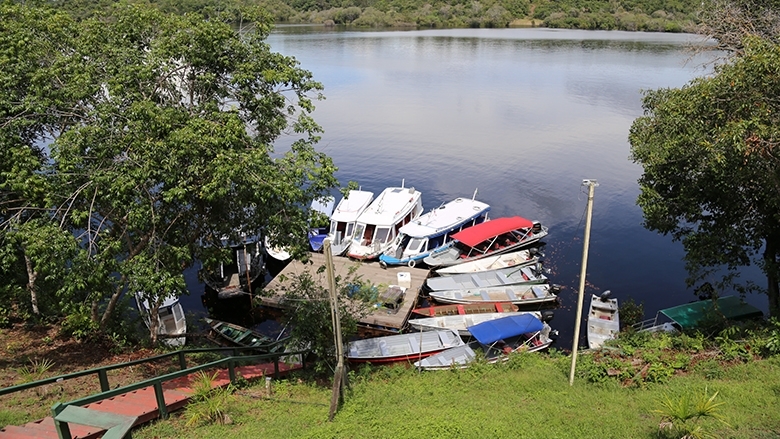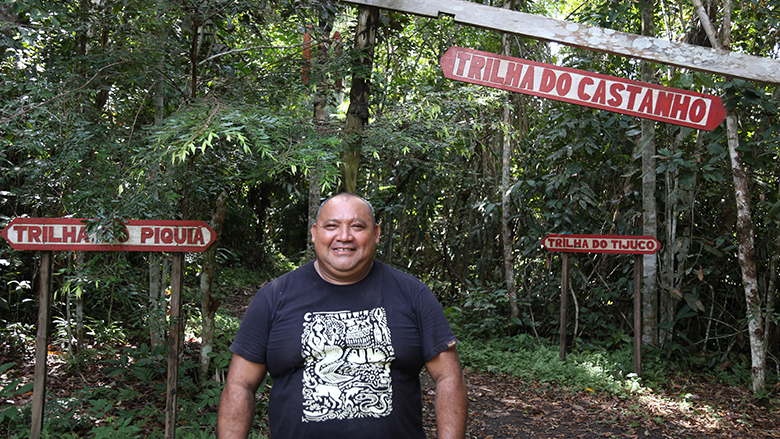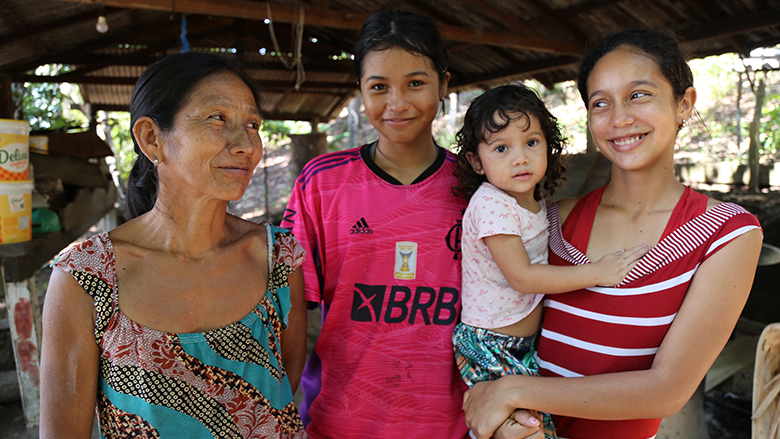Roberto Brito de Mendonça, 48, a community leader from Tumbira, inherited the logging trade from his father and grandfather. For 26 years, he endured many a hungry night in the forest. By day, he cut down trees that would sell for a fair price in the market. This all changed in 2010 when the Bolsa Floresta Program (PBF), a public policy from the Brazilian state of Amazonas, provided resources and training for the community to develop sustainable, community-based businesses, including tourism.
Today, this community, located 64 kilometers from Manaus, is home to a lodge that serves three meals a day with the finest ingredients from the Amazon, along with offering tours and Wi-Fi. "Transitioning to a new way of working was a huge challenge for me, but it led to positive changes. We began to see a viable economic alternative," Roberto recalls.
He remembers Tumbira, then a fragile community of 25 families, and how they gradually witnessed remarkable changes: "Education began to thrive within the community... Tourism brought income and comfort, and it gave us the luxury of sleeping in our own beds and having regular meals."
Also in Tumbira, on the banks of the Rio Negro, you'll find Izolena Garrido's workshop (below), where she creates and sells vibrant bio-jewelry made from seeds and other materials from the forest. As a teacher and artisan, Izolena remembers key milestones in the community's journey to better living conditions, from the 1980s to today.
"We experienced a significant boost in the handicraft sector, and people's lives improved. It's incredibly rewarding to hear someone say they're earning more by doing sustainable activities than they did by logging in the forest," she says with pride. For Izolena, the most important goal is for the communities of Amazonas to become self-sufficient. "It's about believing that 'yes, I am capable. I can continue to be a forest entrepreneur, with or without investment. I will continue to be the person who can keep the forest standing,'" she says with conviction.
It's important to note that Tumbira is part of the Rio Negro Sustainable Development Reserve, a state-protected area where families have land-use rights, enabling them to engage in sustainable economic activities and seek investments.
The sustainable development reserve was established as part of the Amazon Protected Areas Program (ARPA), funded by the Global Environment Facility (GEF), which has the World Bank as its implementing agency. This program, now 22 years old, has been providing annual financial support to the reserve and local communities for the past 16 years. Across Amazonas, ARPA backs 46 protected areas—24 state-run and 22 federally managed—and also supports environmental initiatives led by the State Secretariat of the Environment.

Valuing communities
The stories of Roberto and Izolena are among the success stories of the Bolsa Floresta, established in 2007 and implemented since 2008 by the Amazonas Sustainable Foundation (FAS). The program rewards traditional populations that commit to zero deforestation and has four components: income, association, family, and social.
The PBF Income component supports small businesses focused on sustainable production models. The Association component helps local associations manage collective bioeconomy enterprises, including community-based tourism, fishing, crafts, and the cultivation and processing of cocoa, Brazil nuts, and vegetable oils.
The Bolsa Floresta Family initiative began by providing a monthly stipend of R$ 50 ($10) to mothers in riverside families living in forest conservation units. These families commit to avoiding slash-and-burn practices in primary forests, keeping their children in school, participating in local associations, and attending workshops on climate change and environmental services. The Bolsa Floresta Social invests in education, health, communication, and transportation, tailored to the needs of the local population.
The World Bank's support for the Bolsa Floresta—now known as Guardians of the Forest—started in December 2020 as part of the First Amazonas Fiscal and Environmental Sustainability Programmatic Development Policy Financing. With a $200 million loan, Amazonas restructured its public finances, increased administrative transparency, strengthened environmental conservation, and prepared for a REDD+ system and forest concessions.
These funds also helped extend the Guardians of the Forest's reach to 14,500 families, up from 9,602, and supported the development of community infrastructure, such as small river ports, throughout the state.
Werner Kornexl, the World Bank's project manager, emphasizes that supporting payments for environmental services, a feature of the Guardians of the Forest, is one of many efforts that recognize the contributions of bioeconomy-dependent communities. "Feeling that the State and other institutions are acknowledging their efforts is a significant form of recognition," he states.



